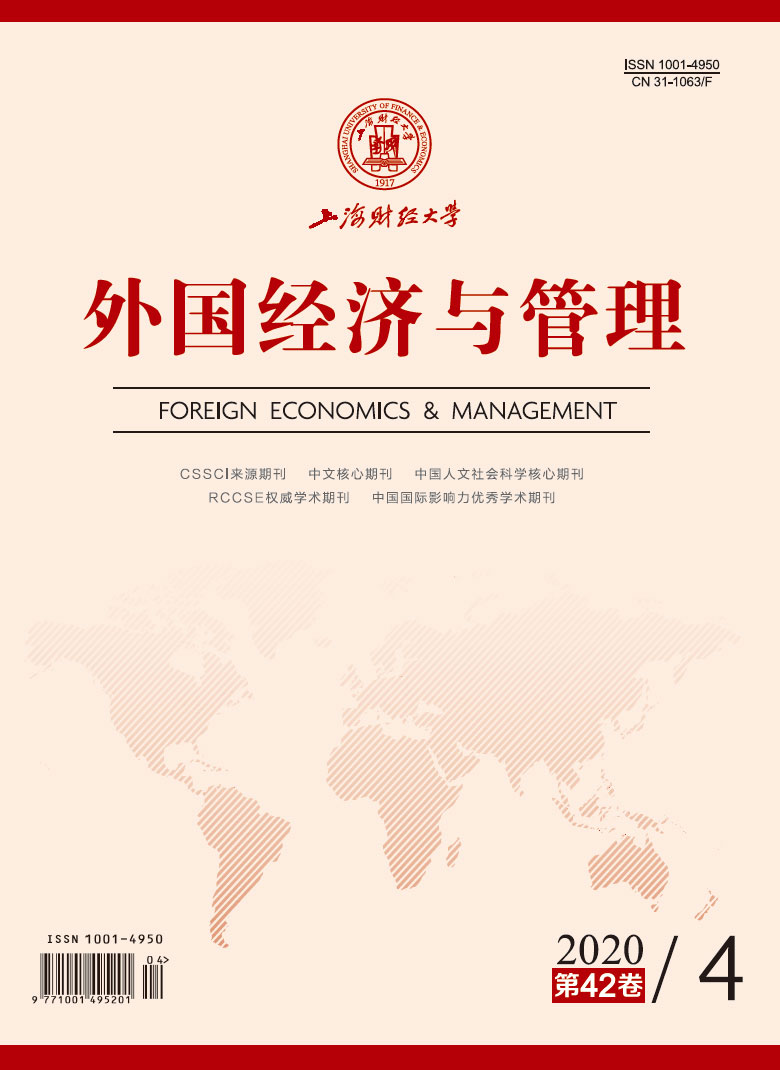远程岗位为员工实施越轨创新行为提供了独特的条件,但远程岗位影响员工越轨创新行为的作用机制和边界条件尚不明确。本研究基于假设检验模型和对231名远程员工两期的调研数据,探讨了远程岗位对员工越轨创新行为的影响机理。结果表明:远程岗位通过工作自主性的中介作用影响员工越轨创新行为,而工作自主性中介传导效应的强弱又依赖于创造性效能感和组织承诺这两个个体特征因素;当创造性效能感和组织承诺较低时,远程岗位组织隔离借由工作自主性对员工越轨创新行为的间接影响不显著。本研究的结论回答了远程岗位自主性工作环境是带来员工“破坏性”越轨生产行为还是“建设性”越轨创新行为这一争议性问题,也为互联网时代远程员工创新管理提供了有益的理论探索和实践启示。
“将在外,君命有所不受”——远程岗位真的有利于员工越轨创新行为吗?
摘要
参考文献
7 Baines S. New technologies and old ways of working in the home of the self-employed teleworker[J]. New Technology, Work and Employment,2002, 17(2): 89-101. DOI:10.1111/1468-005X.00096
8 Cooper C D, Kurland N B. Telecommuting, professional isolation, and employee development in public and private organizations[J]. Journal of Organizational Behavior,2002, 23(4): 511-532. DOI:10.1002/job.145
9 Cordery J L, Morrison D, Wright B M, et al. The impact of autonomy and task uncertainty on team performance: A longitudinal field study[J]. Journal of Organizational Behavior,2010, 31(2-3): 240-258. DOI:10.1002/job.657
10 Criscuolo P, Salter A, Ter Wal A L J. Going underground: Bootlegging and individual innovative performance[J]. Organization Science,2014, 25(5): 1287-1305. DOI:10.1287/orsc.2013.0856
11 Eisenberger R, Karagonlar G, Stinglhamber F, et al. Leader-member exchange and affective organizational commitment: The contribution of supervisor’s organizational embodiment[J]. Journal of Applied Psychology,2010, 95(6): 1085-1103. DOI:10.1037/a0020858
12 Gajendran R S, Harrison D A, Delaney-Klinger K. Are telecommuters remotely good citizens? Unpacking telecommuting’s effects on performance via I-deals and job resources[J]. Personnel Psychology,2015, 68(2): 353-393. DOI:10.1111/peps.12082
13 Grosser T J, Venkataramani V, Labianca G J. An alter-centric perspective on employee innovation: The importance of alters’ creative self-efficacy and network structure[J]. Journal of Applied Psychology,2017, 102(9): 1360-1374. DOI:10.1037/apl0000220
14 Hartmann L C, Bambacas M. Organizational commitment: A multi method scale analysis and test of effects[J]. The International Journal of Organizational Analysis,2000, 8(1): 89-108. DOI:10.1108/eb028912
15 Hornung S, Rousseau D M. Active on the job—Proactive in change: How autonomy at work contributes to employee support for organizational change[J]. Journal of Applied Behavioral Science,2007, 43(4): 401-426. DOI:10.1177/0021886307307555
16 Kanuka H, Jugdev K, Heller R, et al. The rise of the teleworker: False promises and responsive solutions[J]. Higher Education,2008, 56(2): 149-165. DOI:10.1007/s10734-007-9095-z
17 Lin B L, Mainemelis C, Kark R. Leaders’ responses to creative deviance: Differential effects on subsequent creative deviance and creative performance[J]. The Leadership Quarterly,2016, 27(4): 537-556. DOI:10.1016/j.leaqua.2015.09.001
20 Meyer J P, Allen N J. Testing the “side-bet theory” of organizational commitment: Some methodological considerations[J]. Journal of Applied Psychology,1984, 69(3): 372-378. DOI:10.1037/0021-9010.69.3.372
21 Morgeson F P, Humphrey S E. The work design questionnaire (WDQ): Developing and validating a comprehensive measure for assessing job design and the nature of work[J]. Journal of Applied Psychology,2006, 91(6): 1321-1339. DOI:10.1037/0021-9010.91.6.1321
22 Morgeson F P, Reider M H, Campion M A. Selecting individuals in team settings: The importance of social skills, personality characteristics, and teamwork knowledge[J]. Personnel Psychology,2005, 58(3): 583-611. DOI:10.1111/j.1744-6570.2005.655.x
24 Richter A W, Hirst G, van Knippenberg D, et al. Creative self-efficacy and individual creativity in team contexts: Cross-level interactions with team informational resources[J]. Journal of Applied Psychology,2012, 97(6): 1282-1290. DOI:10.1037/a0029359
25 Taskin L, Bridoux F. Telework: A challenge to knowledge transfer in organizations[J]. The International Journal of Human Resource Management,2010, 21(13): 2503-2520. DOI:10.1080/09585192.2010.516600
26 Tierney P, Farmer S M, Graen G B. An examination of leadership and employee creativity: The relevance of traits and relationships[J]. Personnel Psychology,1999, 52(3): 591-620. DOI:10.1111/j.1744-6570.1999.tb00173.x
27 van Knippenberg D, Sleebos E. Organizational identification versus organizational commitment: Self-definition, social exchange, and job attitudes[J]. Journal of Organizational Behavior,2006, 27(5): 571-584. DOI:10.1002/job.359
28 Volmer J, Spurk D, Niessen C. Leader-member exchange (LMX), job autonomy, and creative work involvement[J]. The Leadership Quarterly,2012, 23(3): 456-465. DOI:10.1016/j.leaqua.2011.10.005
引用本文
肖志明. “将在外,君命有所不受”——远程岗位真的有利于员工越轨创新行为吗?[J]. 外国经济与管理, 2020, 42(4): 36-47.
导出参考文献,格式为:
上一篇:营销领域人工智能研究综述






 7071
7071  9591
9591

